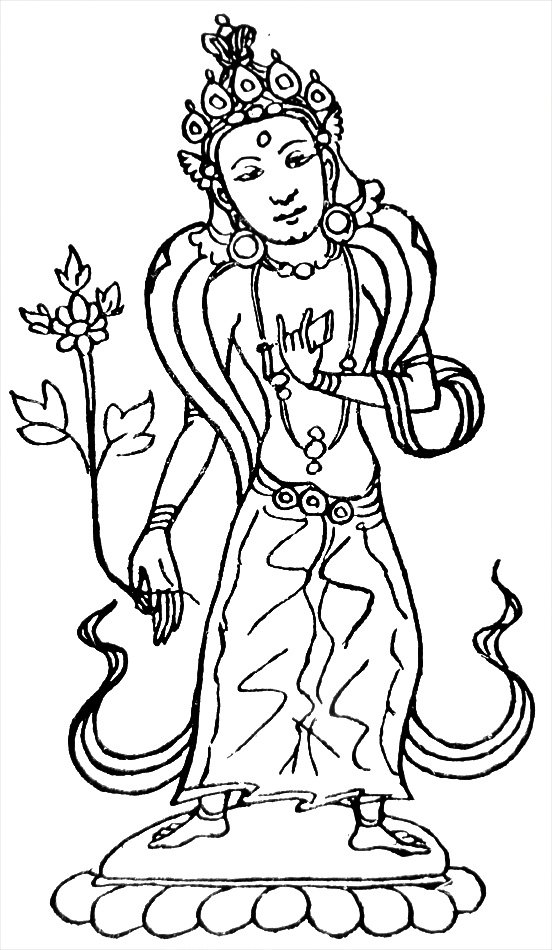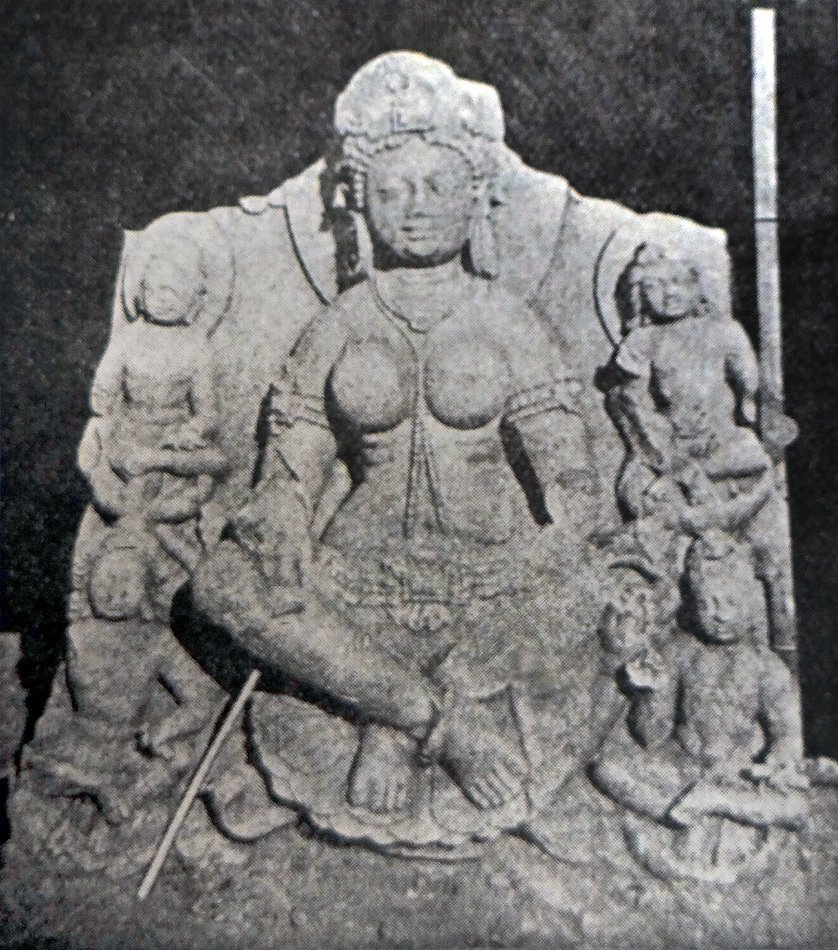The Indian Buddhist Iconography
by Benoytosh Bhattachacharyya | 1958 | 51,392 words | ISBN-10: 8173053138 | ISBN-13: 9788173053139
This page contains an iconography image of Hindu Gods: Vajrasharada and represents figure 232-233 of the book Indian Buddhist Iconography, based on extracts of the Sadhanamala English translation. These plates and illustrations represent either photographs of sculptures or line-drawing reproductions of paintings or other representations of Buddhist artwork.
Figure 232-233 - Hindu Gods: Vajraśāradā
 Fig. 232: Vajraśāradā |
 Fig. 233: Vajraśāradā (Nalanda) |
It is not a fact that Hindu gods [viz., Vajraśāradā] were unknown in the Buddhist pantheon or that the Buddhist pantheon wholly consisted of Buddhist gods. [...] A perusal of the Niṣpannayogāvalī and especially the Dharmadhātuvāgīśvara-maṇḍala will show what a large number of Hindu deities was incorporated in the Mandala, and how this large number was tackled intelligently and fitted into the scheme of the Buddhist Maṇḍalas. [...] Amongst the Hindu deities incorporated into the Buddhist pantheon, three deities appear to be of great importance. These are Mahākāla the prototype of Śiva Mahādeva with the Triśūla as the recognition symbol, Gaṇapati the elephant-faced god, and Sarasvatī the Goddess of Learning with her characteristic Vīṇā. Separate Sādhanas are assigned to all of them, and even independent shrines for them are not wanting in the Buddhist countries of the North.
Sarasvatī is the name of an ancient river now filled up by the sands of Rajputana on the banks of which the Vedic Aryans originally settled after their migration to India. As the banks of the river were occupied by the Vedic Aryans who composed many hymns, and were the scene of many sacrifices, the river was, later on, in the Pauranic age deified as the the Goddess of Learning. The Buddhists borrowed this Hindu goddess, incorporated her bodily into their pantheon in the Tantric age when she was equally popular with the Hindus and the Buddhists, and modified her form in various ways. The Buddhist Sarasvatī may have one face with two arms, or three faces and six arms. When two-armed, she has four different variations. As her worship is widely prevalent among the Buddhists owing to the belief that like Mañjusrī and Prajñāpāramitā, she confers wisdom, learning, intelligence, memory, etc. a comparatively large number of Sādhanas is assigned to her in the Sādhanamālā.
Vajraśāradā:
Symbol: right: lotus; left: book.
According to the Dhyāna in the Sādhanamālā she [Vajraśāradā] rests upon a pure white lotus, and a crescent decorates her crown ; she is three-eyed and two-armed and carries the book in the left hand and the lotus in the right. The accompanying illustration (Fig. 232) shows how she is pictured by Nepalese artists. She may, however, be accompanied by the four attendants, Prajñā and others. As the Sādhana is silent about the Āsana, she may have any attitude. The Nalanda image (Fig. 233) which has been identified as Koṭiśrī (?) is probably a stone representation of this goddess. Vajraśāradā here sits in Bhadrāsana, as do her companions. All the figures in the group are mutilated, but at least one among them carries the Utpala and the book, in the right and left hands respectively.
